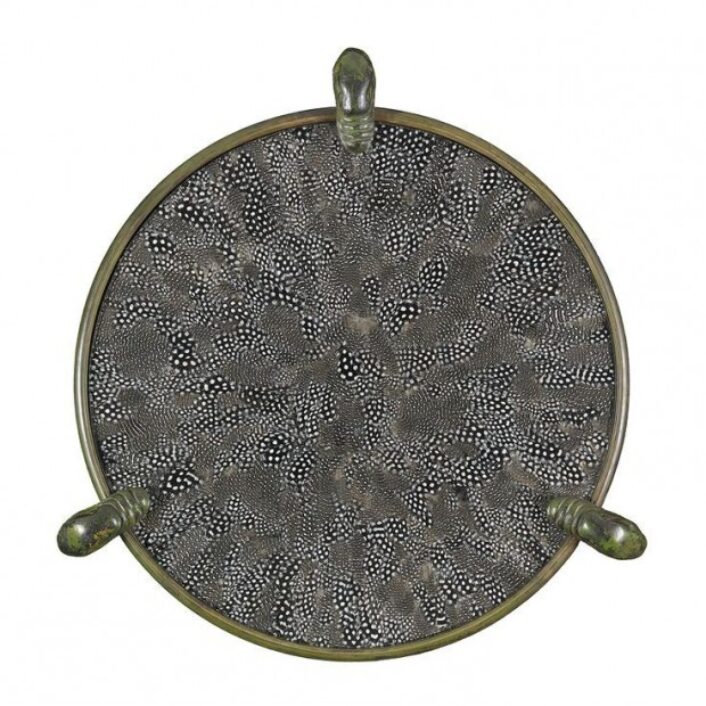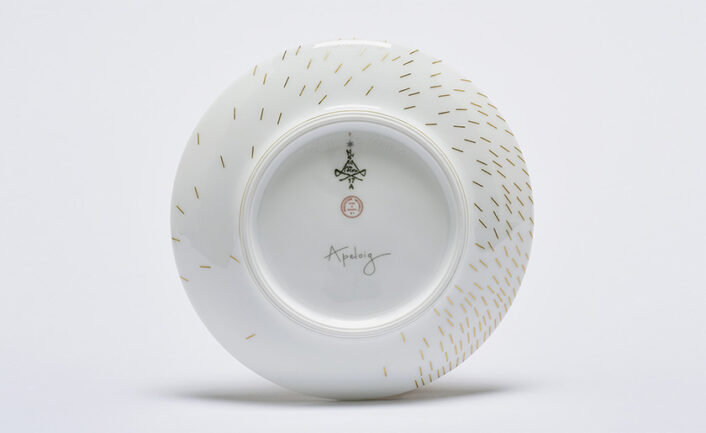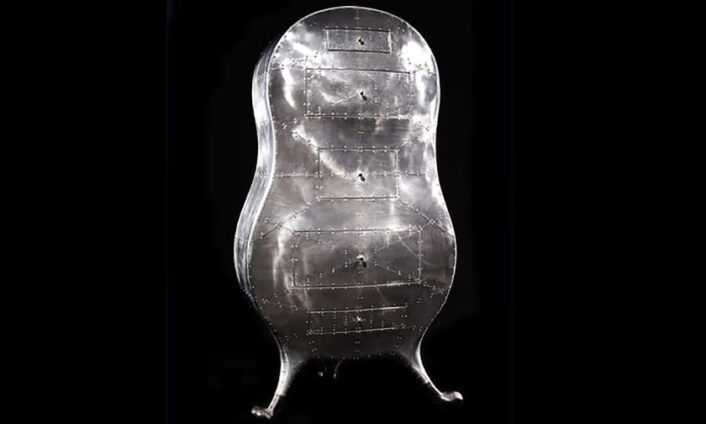Design
Junko Mori
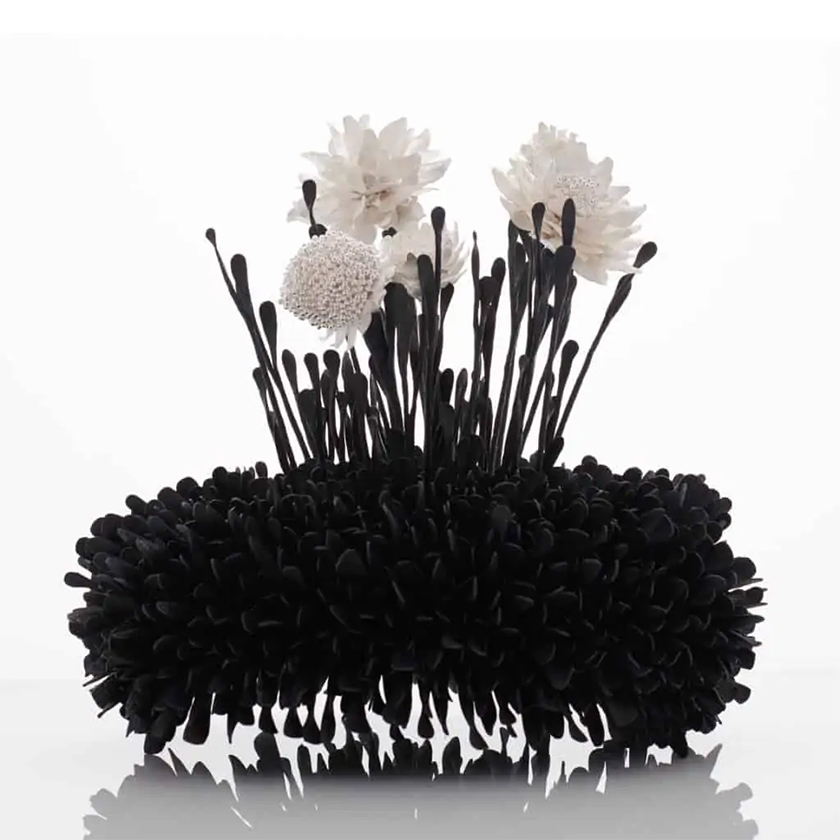
One of Mori’s gorgeous pieces – “Botany Series, Lavender” 2019 in wax-coated mild steel and fine silver
Image courtesy of: Adrian Sassoon
Junko Mori is a Japanese-born, London-based artist that is best known for her hand-forged metal sculptures. Growing up near Tokyo, she graduated from Musashino Art University with a bachelor’s degree in three-dimensional design; following that, she went on to study silversmithing and metalworking at Camberwell College of Arts in London.
Originally, Mori worked as a blacksmith in Japan; however inspired by Hiroshi Suzuki, she went to study in England. After graduation, the artisan was scooped up by Adrian Sasson, the same gallery that represents Suzuki. Today, Mori resides in North Wales where she has become one of the country’s leading artisans in silver and steel. Mori’s work is featured at many public museum collections including the V&A, the Crafts Council, and the British Museum.
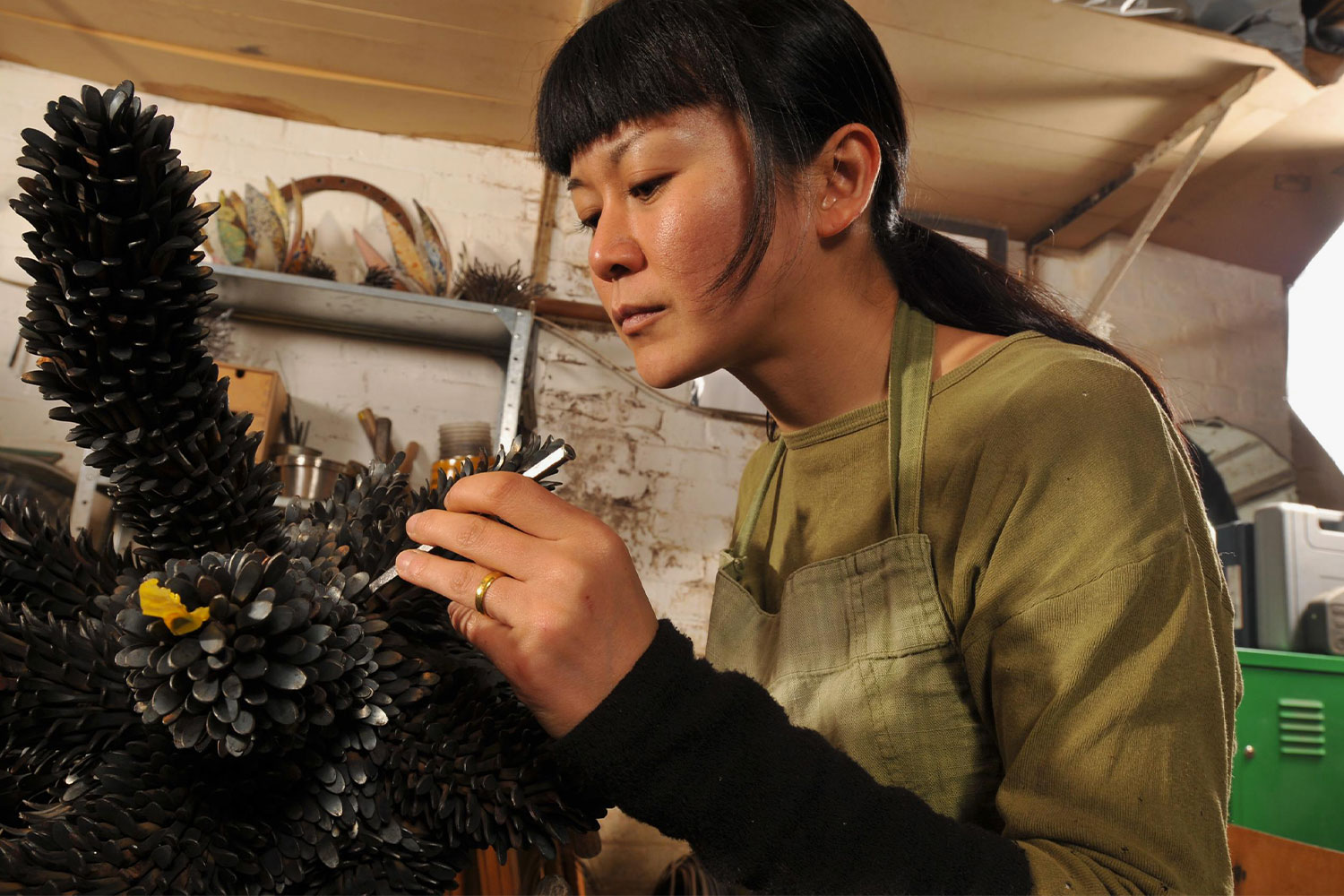
The artist at work on the small details.
Image courtesy of: Homo Faber
Mori’s love for organisms and patterns began as a young child; the artist remembers being fascinated with what she discovered looking through her brother’s microscope. Mori was further fueled by the desire to find repetition within nature. She says (courtesy of Tokyo Weekender),”When I was researching some visual images in university, I noticed that patterns on Mars and those in the human blood vein structure were very similar, and I got this infinite impression of ‘repeat-ness’ in nature.”
Specifically, Mori finds making her work, especially welding, “very meditative.” Luckily, her background in metals has given her the experience to be “fearless.” Whether it’s mild steel or pure silver that she uses, the way Mori assembles forged and cast metal is both progressive and innovative.
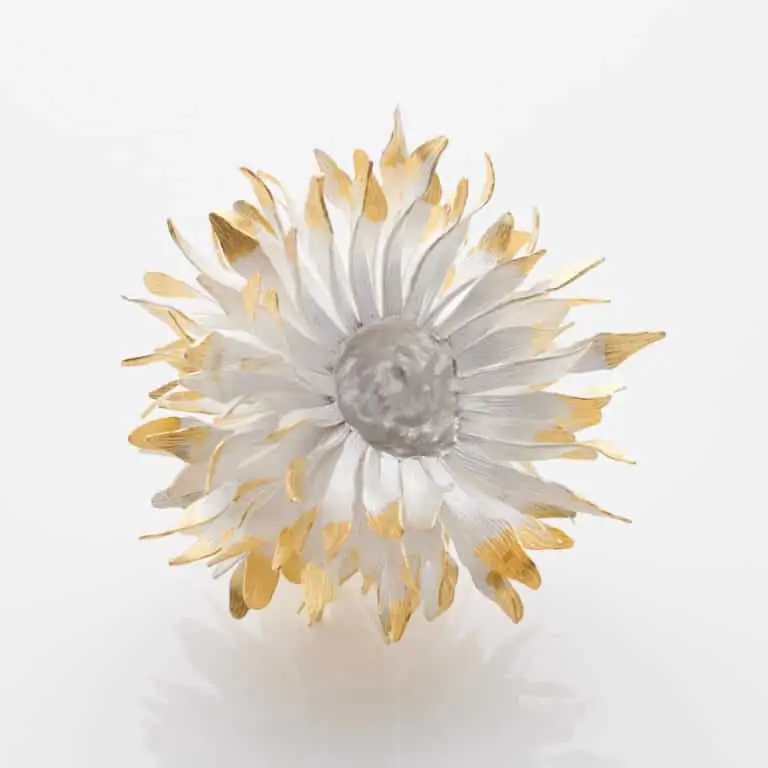
“Organism Hybrid; Gold Petal,” 2019. Forged fine silver 999 with 24ct gold details, consists of 250 grams of silver and 100 grams of gold.
Image courtesy of: Adrian Sassoon
In a unique way, Mori’s pieces are both organic and minimalistic. Perhaps that is because the artisan bases most of her works on her observations within nature… specifically plant matter and trees. Mori hopes enjoying her work provides feelings similar to being in nature where you just exist in the element rather than questioning your surroundings. Senses are elevated- smell, sight, touch- but rather than evaluating what is happening, it seems best to just enjoy.
Mori says, “I don’t like writing long statements and asking people to read them to understand my work. It’s not needed. I’m totally happy if someone says: ‘That’s pretty. I love it.’ Or if someone says: ‘Oh, I really hate spiky things.’ It’s fine.” She says that she welds her work “unconsciously,” without a specific notion of what it will end up as or look like when it is finished. If she gets to a point where she is happy with the outcome, then she stops…. 100% content.
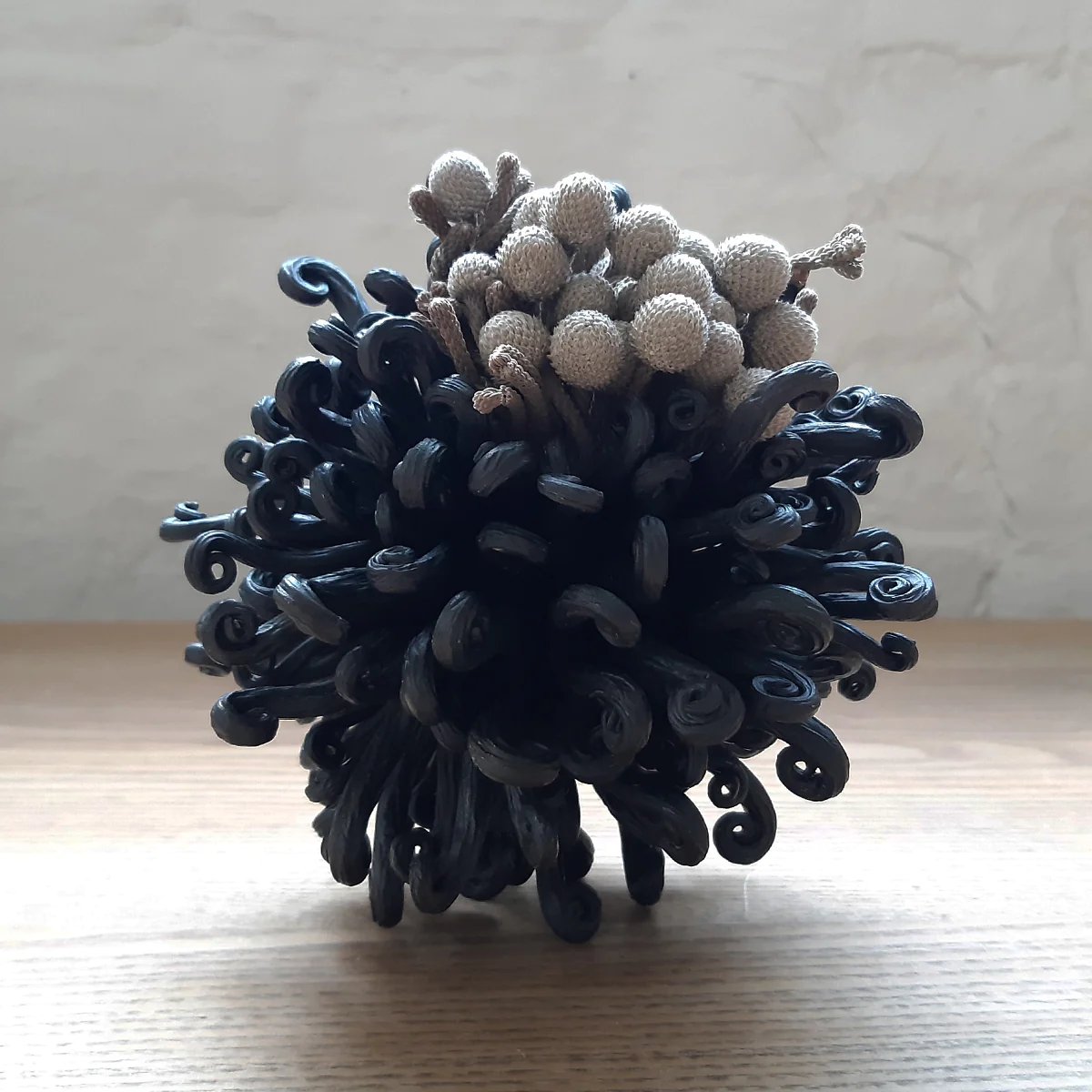
Hand-forged steel “fern” organism. A wax-coated, hand forged steel item with dripped Brunia Silver.
Image courtesy of: Bluecoat Display Centre
The finished work consists of many individually forged steel or metal pieces. The trace differences between each piece is a result of hand-hammering… and it is what makes the work as special as it is. Courtesy of VSE Mart, “No piece is individually planned but becomes fully formed within the making and thinking process. Repeating little accidents, like a mutation of cells, the final accumulation of units emerges within this process of evolution.”
Mori’s works vary from small objects to massively huge welded steel works of art. As for how she begins her creative process, the artist typically draws and sketches as a sort of “brainstorming project”. However the designs that she puts down on paper rarely mimic the end result.
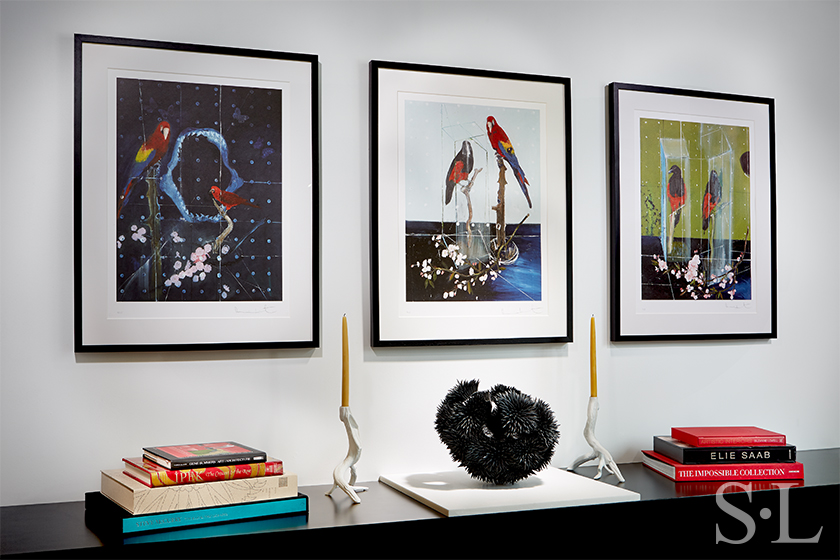
We are lucky to have a sculpture by Junko Mori in our Chicago studio! Pictured is “Propagation Project, Spiny Husk”, 2008, in wax coated mild steel, pictured with three lithographs by Damien Hirst.
Photo courtesy of Suzanne Lovell Inc.
There is no doubt that many of Mori’s pieces resemble living things found in the natural world. There is a lot of similarity between select pieces and sea creatures, specifically sea urchins. This is no accident; it is clear that there is an entire world of inspiration out there for Mori. As she concludes (courtesy of Adrian Sassoon), “I am always drawn to the visual impact of an aggregate assembled with many small components: I find infinite possibilities of the form multiplied by the vital power beyond the physical space, such as cell division through the microscope.”
